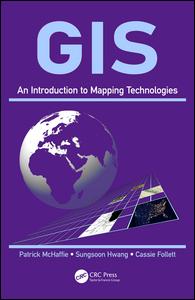

Most ebook files are in PDF format, so you can easily read them using various software such as Foxit Reader or directly on the Google Chrome browser.
Some ebook files are released by publishers in other formats such as .awz, .mobi, .epub, .fb2, etc. You may need to install specific software to read these formats on mobile/PC, such as Calibre.
Please read the tutorial at this link: https://ebookbell.com/faq
We offer FREE conversion to the popular formats you request; however, this may take some time. Therefore, right after payment, please email us, and we will try to provide the service as quickly as possible.
For some exceptional file formats or broken links (if any), please refrain from opening any disputes. Instead, email us first, and we will try to assist within a maximum of 6 hours.
EbookBell Team

0.0
0 reviewsOver the past few decades the world has been organized through the growth and integration of geographic information systems (GIS) across public and private sector industries, agencies, and organizations. This has happened in a technological context that includes the widespread deployment of multiple digital mobile technologies, digital wireless communication networks, positioning, navigation and mapping services, and cloud-based computing, spawning new ways of imagining, creating, and consuming geospatial information and analytics.
GIS: An Introduction to Mapping Technologies is written with the detached voices of practitioner scholars who draw on a diverse set of experiences and education, with a shared view of GIS that is grounded in the analysis of scale-diverse contexts emphasizing cities and their social and environmental geographies. GIS is presented as a critical toolset that allows analysts to focus on urban social and environmental sustainability.
The book opens with chapters that explore foundational techniques of mapping, data acquisition and field data collection using GNSS, georeferencing, spatial analysis, thematic mapping, and data models. It explores web GIS and open source GIS making geospatial technology available to many who would not be able to access it otherwise. Also, the book covers in depth the integration of remote sensing into GIS, Health GIS, Digital Humanities GIS, and the increased use of GIS in diverse types of organizations. Active learning is emphasized with ArcGIS Desktop lab activities integrated into most of the chapters.
Written by experienced authors from the Department of Geography at DePaul University in Chicago, this textbook is a great introduction to GIS for a diverse range of undergraduates and graduate students, and professionals who are concerned with urbanization, economic justice, and environmental sustainability.